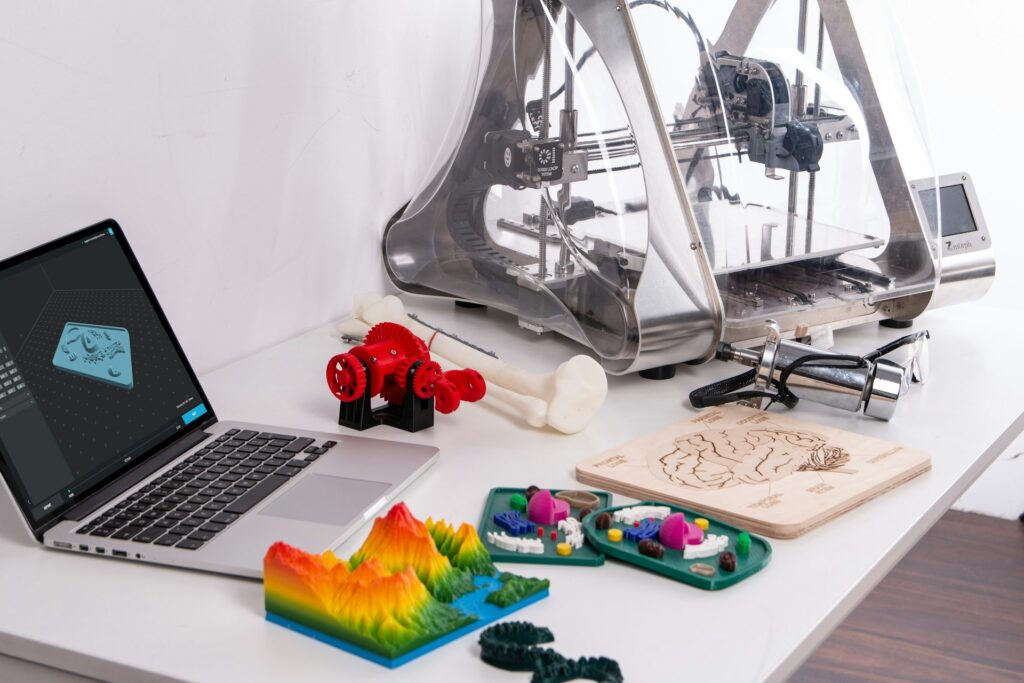Dr. Hamed Shahsavan, Associate Professor of Chemical Engineering at the University of Waterloo, has led an international research team in developing a new type of artificial muscle material for soft robotics. By incorporating liquid crystal inclusions into liquid crystal elastomers (LCEs), the team has created a composite material that is both stronger and more responsive than conventional LCEs, offering a potential solution to a longstanding challenge in the field of soft robotics.
Vasanji, S., Scarfo, M. G., Alyami, A., Mekonnen, T. H., Hajireza, P., Saed, M. O., Jákli, A., & Shahsavan, H. (2025). Stiffening Liquid Crystal Elastomers with Liquid Crystal Inclusions. Advanced Materials. https://doi.org/10.1002/adma.202504592
Soft robots are designed to be flexible, deformable, and safe for interactions with humans and delicate objects. Unlike rigid robots, which rely on motors and hard components for movement, soft robots achieve motion through deformable structures. While this flexibility is advantageous, it places high demands on the materials used for actuation. Traditional LCEs can undergo large reversible deformations when heated, but their limited mechanical strength has restricted their practical use in applications that require significant force or load-bearing capacity.
Dr. Hamed Shahsavan at the University of Waterloo stated,
“Materials with such capabilities are highly desired in robotics as they can replace old-school, bulky, heavy actuators and electromotors with light, soft, artificial muscles without sacrificing performance. This is the simplest yet most robust strategy to stiffen LCEs and still maintain their programmable nature.”
The Waterloo-led team discovered that introducing low-molecular-weight liquid crystals into LCE networks significantly increases stiffness and strength without compromising the material’s actuation properties. The liquid crystals form microscopic domains within the polymer, which behave as solid inclusions even while in liquid form. This internal structure allows the material to resist stretching and maintain its shape under load while still undergoing programmed thermal deformations.
Experimental results indicate that these reinforced LCEs are up to nine times stronger than unmodified LCEs. Fibers made from the composite material can lift loads more than 2,000 times their own weight, and the output work approaches 24 joules per kilogram, which is approximately three times higher than the work generated by typical mammalian muscle tissue. X-ray analysis confirmed that the liquid crystal inclusions disperse evenly within the elastomer and form stable microdomains that enhance mechanical performance without disrupting the overall molecular alignment required for actuation.
The international collaboration also included Dr. Tizazu Mekonnen, Sahad Vasanji, Matthew Scarfo from the University of Waterloo, Dr. M.O. Saed from the University of Cambridge, and Dr. Antal Jákli from Kent State University. The team combined expertise in polymer chemistry, materials engineering, and robotics to design, synthesize, and characterize the reinforced LCEs, ensuring both mechanical robustness and predictable actuation behavior.
The enhanced LCEs have broad potential applications in soft robotics, including microrobotic manipulators, wearable exoskeletons, medical devices, and robotic systems designed to operate in confined or human-centric environments. By providing stronger, programmable artificial muscles, the material could replace traditional motors and actuators, enabling robots to move more naturally and safely.
The research team is currently exploring the use of these reinforced LCEs as inks for 3D printing artificial muscles. This approach could allow for more complex geometries and customized actuators tailored to specific tasks or robotic platforms. Challenges remain, including ensuring uniform phase separation and controlling the polymerization process to maintain consistent performance at larger scales.
Dr. Shahsavan notes that this method of stiffening LCEs is both simple and robust, maintaining the programmable nature of the material while substantially improving its mechanical properties. If successful, these developments could expand the functional capabilities of soft robots and open new possibilities for the integration of artificial muscles in a wide range of technological and biomedical applications.
By combining the flexibility of elastomers with the reinforcing properties of liquid crystals, the team at the University of Waterloo has advanced the design of soft robotic actuators, moving closer to artificial muscles that can operate efficiently, safely, and with lifelike motion.

Adrian graduated with a Masters Degree (1st Class Honours) in Chemical Engineering from Chester University along with Harris. His master’s research aimed to develop a standardadised clean water oxygenation transfer procedure to test bubble diffusers that are currently used in the wastewater industry commercial market. He has also undergone placments in both US and China primarely focused within the R&D department and is an associate member of the Institute of Chemical Engineers (IChemE).



